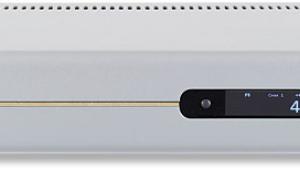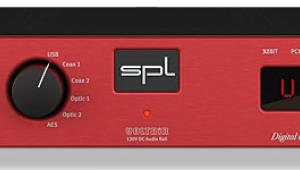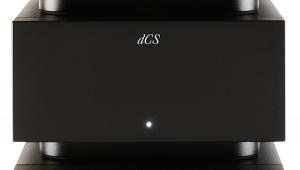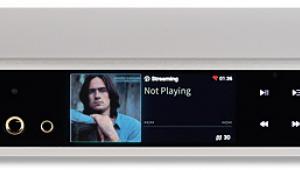Canor Precision Tube DAC 2.10 USB DAC w/Tube Output

 This Slovakian-built DAC retains the brand's signature triode-tube analogue stage from the companion CD 2.10 disc player, but its digital engine beats to a very different tune
This Slovakian-built DAC retains the brand's signature triode-tube analogue stage from the companion CD 2.10 disc player, but its digital engine beats to a very different tune
Many manufacturers building tube-based products seem to prefer retro-nostalgic designs but Slovakia's Canor is one of the few that favours a more modern, progressive aesthetic. It not only produces tube amplifiers but also integrates line-level tube stages into source products, such as the CD 2.10 CD player [HFN Apr '21]. The partnering DAC 2.10 also marries an output stage containing four Electro-Harmonix 6922EH triode tubes with a digital mainboard, the latter equipped with a pair of ESS9038Q2M DACs. Otherwise this is a dyed-in-the wool 'legacy' DAC with no network or wireless functions and a fixed rather than variable output. So that large rotary is not a volume control…
As PM notes in his boxout this digital stage is reminiscent of that employed in the EISA Award-winning Musical Fidelity M6x DAC [HFN Jul '22], and although they are not the same device they both offer a selection of seven digital filters to season the listening experience. And since PM tested the Precision Tube DAC 2.10, Canor has added yet another filter – Optimal Transient – that was developed by John Westlake and used in Pro-Ject's Pre Box S2 Digital [HFN Aug '17].
It Pays To Play
The combination of these filters with Canor's reclocking and oversample bypass modes offers up the potential for a lot of 'tweaking' possibilities, particularly by audiophiles who like to play around searching for the most pleasing sound. As some of these filters deliver better results with high sample-rate material, rather than CD/48kHz files, you probably won't quickly settle on one selection and leave it at that. At least, that was my experience, in part because Canor made it easy to switch between the different options, with dedicated filter buttons and more on the remote. Experimenting is encouraged!
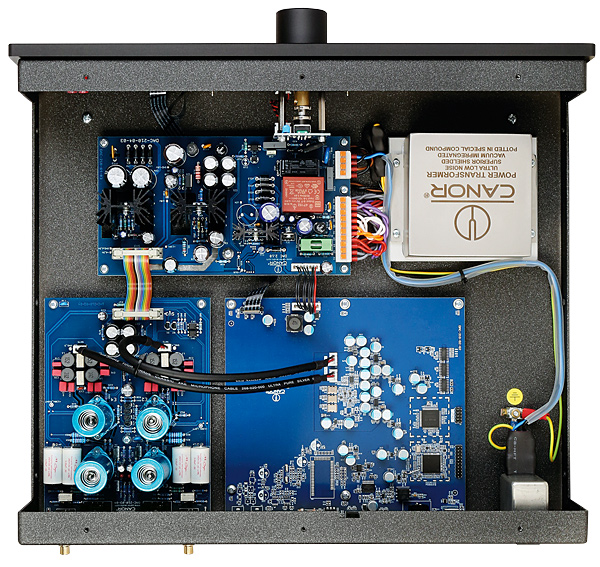
As you would expect from a DAC in this price class, it is ready for all types of hi-res material, accepting LPCM up to 768kHz and DSD streams up to and including DSD512 via its USB-B input. The coaxial S/PDIF, optical and AES/EBU (XLR) inputs are limited to 192kHz/24-bit but full MQA unfolding is at hand, if you so desire.
The Tube DAC 2.10 is part of Canor's Premium Line, which is an apt description for a series that boasts such a luxurious appearance. The front façade stands slightly proud on all sides, its panel divided into three rows with a brushed aluminium finish above and below, and a black glass strip in the middle which dips towards a large power button in the centre. A nice contrasting look, but if you prefer a more subdued approach the DAC is also available in full black, as pictured here.
Listen And Learn
The use of orange for the Canor logo and lettering of the display is equally on-brand. Out of the box this 3.5in screen shows a lot of information, arguably too much, with the screen real estate dominated by 'PCM' or 'DSD', plus an icon indicating which source input is selected. Sitting a few metres away, this meant the information I really wanted to know – the incoming sample rate and selected filter – wasn't particularly legible. Then again, it's probably more interesting to just listen while trying out the different DAC filters on offer, letting your ears determine which sound you prefer.
And I shouldn't grumble too much, as Canor has actually given some thought to this. Its solution is a 'Theme' button on the supplied remote that switches the display over to the classic Canor look of large retro characters and pared down information (input and sampling rate). For some reason the word 'Atari' popped into my mind when I saw it.
Remote controls are an area where so many brands drop the ball, but in line with the 'premium' branding, Canor's is a sturdy metal unit that's both firmly in the luxury camp yet easy to operate. There's even a spare battery, a negligible cost but a nice gesture all the same. You can also navigate the settings of the Tube DAC 2.10 using the twist/press rotary encoder on the front, but, with dedicated buttons to change most of the options on the handset, there's little reason to dive into the system menus.








